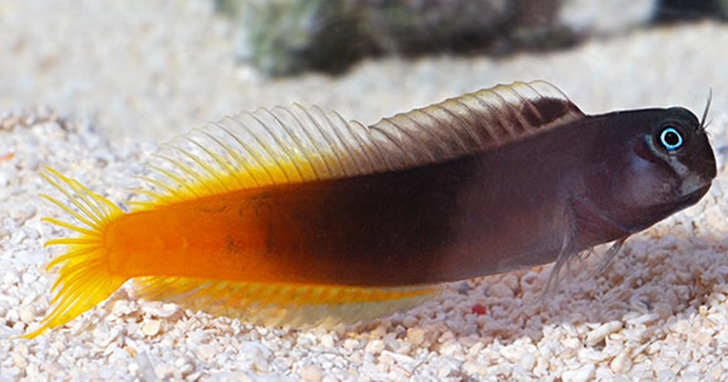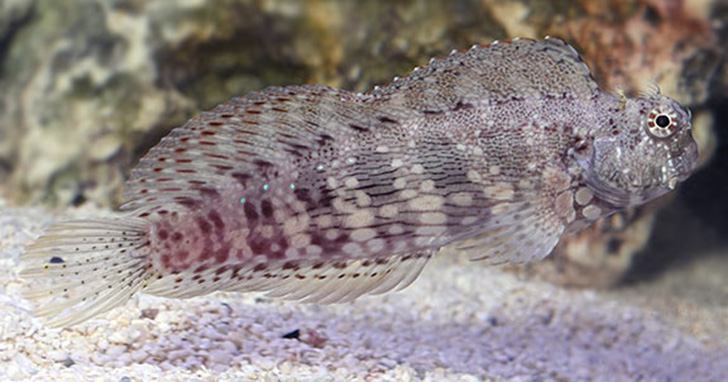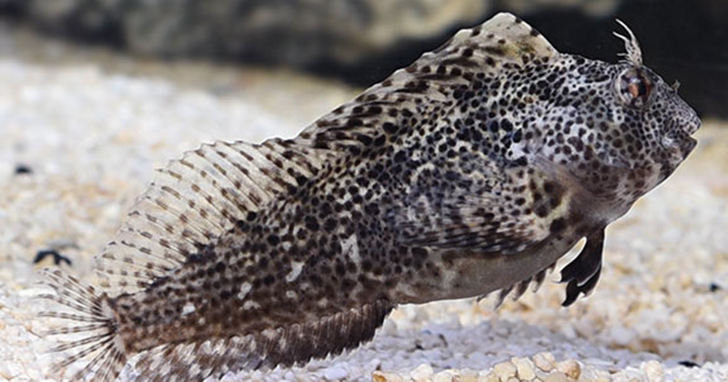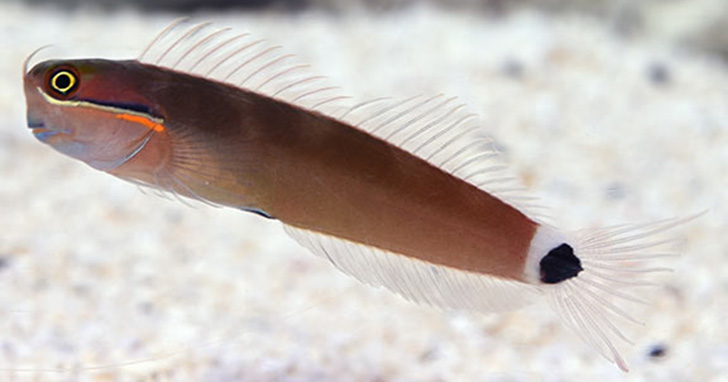Blennies: A curious fish with a venomous bite!

Blennies: One fish. Countless variations!What is a Blenny?
The Blenny, or Blenniidae, is an incredible addition to one’s aquarium, with a vast variety of species to choose from! This species is truly a whimsical one, with over 900 species, with an amazing assortment of color and one genus even containing blennies with venomous fangs. Blenny colorations vary significantly depending on their species. Most have elongated bodies and have pectoral fins that help them rest at the bottom of the tank. Some, like the Canary Blenny, have one color throughout, while others, like the Sailfin Blenny, have a mottled color to help them blend into the background. Unlike most other more commonly known reef species, blennies are more likely to be dark or bright in their color patterns. 
Sailfin/Algae Blenny (Salarias fasciatus)
How big is a Blenny?
Most blennies can grow between 3 – 5 inches as an adult. What size tank and conditions do Blennies need?
Blenniidae are fairly small, and therefore only require a minimum tank size of 30 gallons. However, it is important to adhere to certain conditions to ensure that you continue to maintain a happy community of blennies. These small species require lots of tiny nooks and crannies. Due to their smaller size, they generally do not compete with larger, more aggressive fish for caves. It’s common to see your blenny digging their own little cave under rocks and live rock through the sand. Blennies being marine fish means that maintaining your saltwater conditions is absolutely critical. Make sure to check out our saltwater compatibility chart here to better understand the ideal conditions for blennies. Regular maintenance is important, along with remembering exactly where your fish might be hiding. This is especially important since some blennies might be venomous, and it also pays to remember that blennies love to jump out of their tank, making a tight-fitting lid an absolute necessity. Blennies generally do fine in a community tank, because they get along fairly well with most other fish around the same size or so. While they may squabble with each other over the ideal hiding place, it’s unlikely to see them harassing another species, unless they happen to be much smaller than the blennies themselves, in which case they would show aggression towards them. Meanwhile, make it a point to keep them away from tanks that house larger, carnivorous species such as the Lionfish, which may view blennies as food. What do blennies eat?
These whimsical species aren’t picky eaters, making them ideal for most aquarists. Most saltwater community diets do just fine. Depending on their species, some blennies may be more inclined towards the herbivorous or carnivorous end of the spectrum, while most do happen to be omnivores. Venomous blennies tend to forage more in the middle of the water column than not, compared to the other species who focus on the same at the bottom of the tank. It is best to scatter the food across the tank to ensure that all your blennies get their food without having to compete too much for it. 
Molly Miller Blenny (Scartella cristata)
Make sure to do your research on the variations between blenny species in order to sort out the perfect diet for them. For example, the aptly named Lawnmower Blenny loves algae. In fact, another species of blenny, the Molly Miller Blenny, are kept in tanks primarily as they help keep the tank free of algae. As a rule of thumb, it is possible to gauge the varying diets of the different species of blennies depending on their behavior within the tank. You’ll find that blennies who enjoy spending their time swimming around the water column, such as Fang Blennies, enjoy brine shrimp and mysis shrimp. Meanwhile, the bottom feeder blennies are omnivores, feeding on crustaceans as well as algal films or turfs. Are blennies venomous?
One of the most amazing facts about blennies is that they have countless variations with significant changes, ranging from many colors to even a genus with venomous fangs. While most venomous fish inject theirs through their fins, blennies tend to deliver theirs through a swift, venomous bite. Furthermore, when tested on mice, research found that their venom did not produce pain, rather, a sudden drop in blood pressure, which suggests that their bite, while not painful, might cause a stupefying effect on potential predators ambitious enough to consider these blennies a quick meal. 
Tail Spot Blenny (Ecsenius stigmatura)
Conclusion
Blennies are truly an incredible and widely varied species, and hands down, an incredible addition to your aquarium. Their care level varies from easy to moderate, as you cycle through the different species they have, but each offers something truly unique. From the incredible, and almost pop culture -inspired Combtooth Blenny, to the eel-like Pikeblenny, you’ll always find a unique blenny with your name on it. |
|
|


